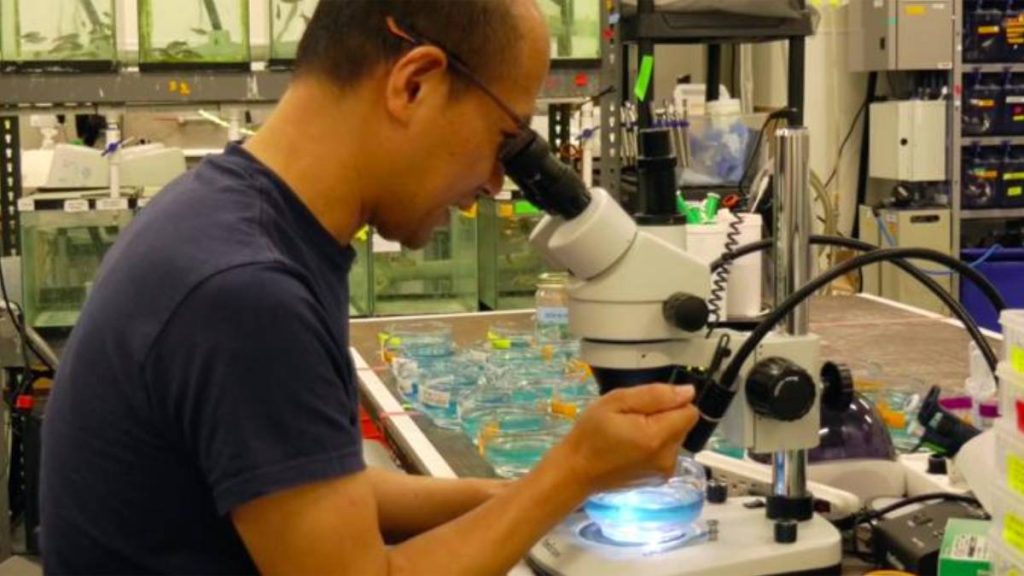University of Hawai‘i project investigating causes of autism-related repetitive behaviors

Stereotypic repetitive behaviors are common in people with autism.
They include body rocking, toe tapping, hand flapping, spinning objects and more, and are generally observed when people are under stress and/or having carbohydrate-rich meals, according to the latest research.
A new University of Hawaiʻi at Mānoa public-impact research project will investigate the genetic and metabolic components that may be related to repetitive behaviors, which could lead to new treatments for those behaviors. In late September 2023, the project received a five-year, $1,519,939 National Institutes of Health/National Institute of General Medical Sciences grant.
A study from the Centers for Disease Control and Prevention suggests that more than 5.4 million people in the U.S. live with autism spectrum disorder. There are many FDA-approved medicines for those patients, but many of them lead to unwanted side effects.
“Students or younger children who suffer from repetitive behaviors, they cannot focus during class time and also social activities between kids. If we can reduce the repetitive behaviors, without costing anything major and other side effects, that is our goal,” said principal investigator and School of Life Sciences Associate Professor Masato Yoshizawa. “Our project is trying to mitigate the difficulty as much as possible by a least invasive method, which is diet and nutritional treatment.”
Ketosis diet could lead to treatments
University of Hawai‘i researchers are collaborating with doctors at Shriners Hospitals for Children, who have discovered that ketosis—a metabolic state that uses fat as the energy source instead of sugar—can reduce repetitive behavior while allowing more complex tasks such as social behaviors in patients with autism. Using this knowledge, the University of Hawai‘i researchers studied two forms of Mexican tetra fish—one lives in caves and the other lives in rivers/ponds. Living in caves promotes repetitive circling, while living in rivers and ponds does not show repetitive circling, including in stressful environments.
The researchers discovered that ketogenic (high fat, low carb) diet feeding reduces the repetitive behavior in the Mexican tetra fish living in caves resulting in two implications:
- The genomic changes from fish living on the surface to those living in caves induce repetitive behavior.
- The metabolic change toward ketosis reduces repetitive behavior.
Critical differences, but important possibilities
The researchers stress that they do not consider that human disorders and fish traits are based on the same physiology because they are so different. However, it is fair to use the fish project to predict the possible genetic and molecular pathways, because humans and fish share more than 90% of gene and molecular pathways.
The researchers will now generate complex sets of data (20,000 genes, 300 serum metabolites or small molecules in serum, and 1,000 gut microorganisms, as well as 3D-imaging of active neurons in the brain). These high dimensional data sets are challenging to visualize and analyze, but emerging topological mapping and machine-learning-aided algorithms the researchers are developing can analyze them without hundreds of samples, whereas the typical machine-learning method requires thousands of samples for training.
The outcome of the research will provide the genetic and metabolic bases of repetitive behaviors, which will lead to developing new treatments for repetitive behavior-associated disorders and/or repetitive behavior-prone animals in captivity.
This research project includes training for University of Hawai‘i at Mānoa undergraduate and graduate students, supporting future scientists and biomedical specialists.
Also on Yoshizawa’s team are Motoko Iwashita, a research affiliate in the School of Life Sciences and Farzana Nasrin, an assistant professor in the Department of Mathematics.















